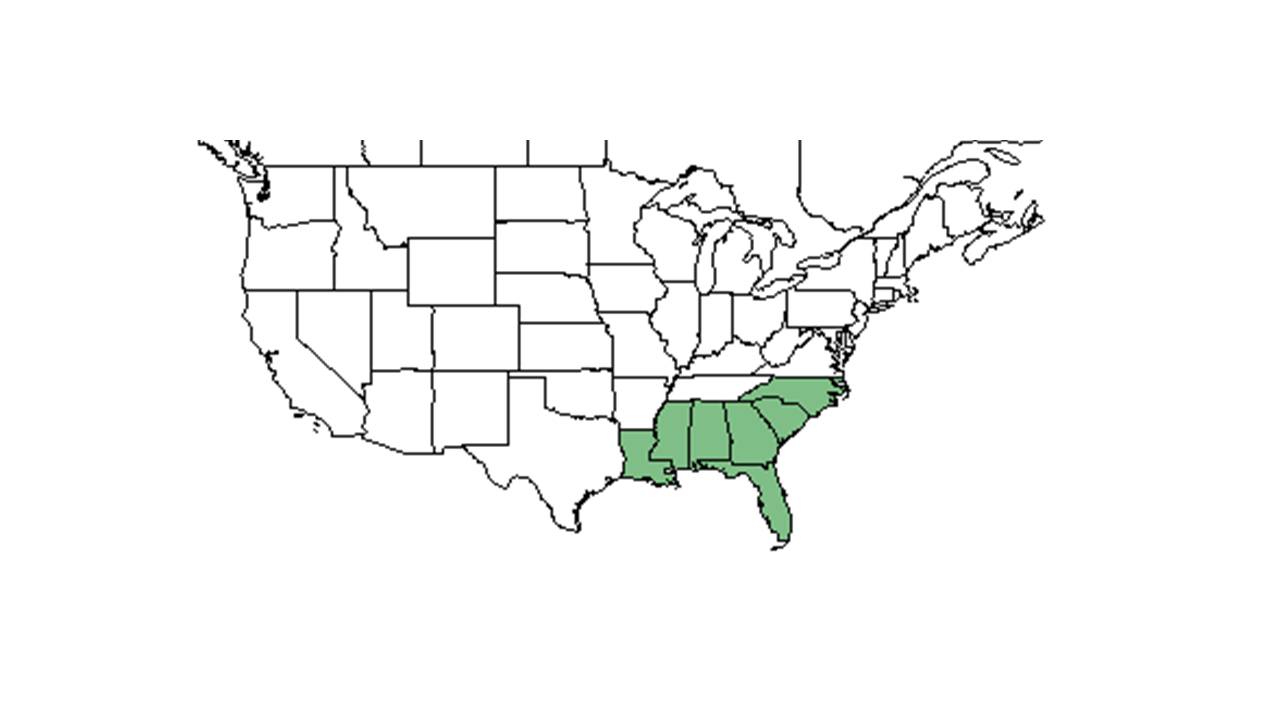Seymeria pectinata
| Seymeria pectinata | |
|---|---|

| |
| Photo taken by Kevin Robertson | |
| Scientific classification | |
| Kingdom: | Plantae |
| Division: | Magnoliophyta – Flowering plants |
| Class: | Magnoliopsida – Dicotyledons |
| Order: | Scrophulariales |
| Family: | Scrophulariaceae |
| Genus: | Seymeria |
| Species: | S. pectinata |
| Binomial name | |
| Seymeria pectinata Pursh | |

| |
| Natural range of Seymeria pectinata from USDA NRCS Plants Database. | |
Common names: Piedmont blacksenna, Combleaf seymeria
Contents
Taxonomic notes
Synonyms: Seymeria pectinata Pursh ssp. pectinata; Afzelia pectinata (Pursh) Kuntze ssp. pectinata
Description
It can grow up to 75 centimeters tall and is covered with stiff nonglandular hairs. It is stiffly branched with the longest branches occurring at the base. Seed capsules are ovoid covered with glandular hairs; flowers are around 1 centimeter long and yellow with hairs.[1]
"Erect, often profusely branched, presumably parasitic, glandular-pubescent annuals. Leaves opposite, pinnately or bipinnately parted or divided into linear to filiform segments. Flowers axillary, solitary, the terminal racemes weakly differentiated. Calyx lobes 5, longer than the tube; corolla yellow, rotate, 9-10 mm long, nearly regular, the lobes 5, longer than the tube; stamens 4, exserted, filaments pubescent. Capsule ovoid, 4-6 mm long; seeds numerous, winged."[2]
"Plant moderately branched, the branches spreading, stem pubescence of mixed long and short spreading trichomes. Leaves mostly more than 1 cm long, segments linear, 1-2 mm wide. Calyx lobes 4-5 mm long. Capsule glandular-pubescent."[2]
Distribution
S. pectinata is much more restricted in its distribution than S. cassioides however, it has a broader host range. It often prefers drier sites than S. cassioides and on occasion they can be found growing together. There is no evidence of hybridization between the two species.[1]
Ecology
Habitat
In the Coastal Plain in Florida and Georgia, S. pectinata can occur in open woodlands, flat longleaf pine-wiregrass communities, sand live oak groves, and sandridges.[3] It also occurs along roads. Soils include sandy soil and loamy sand.[3] Associated species include longleaf pine, wiregrass, sand live oak, and sand pine.[3]
Phenology
Flowers and fruits in September.[3]
Pollination
Deyrup conducted a study and observed these bees, Augochlorella aurata, Augochloropsis sumptuosa, Dialictus placidensis, Anthidiellum notatum rufimaculatum, A. perplexum, Coelioxys sayi, Megachile brevis pseudobrevis, M. mendica, M. petulans, and Bombus impatiens, on S. pectinata (2002).
The following Hymenoptera families and species were observed visiting flowers of Seymeria pectinata at Archbold Biological Station:[4]
Halictidae: Augochlorella aurata, Augochloropsis sumptuosa, Lasioglossum placidensis
Megachilidae: Anthidiellum notatum rufomaculatum, Anthidiellum perplexum, Coelioxys sayi, Megachile brevis pseudobrevis, M. mendica, M. petulans
Conservation and management
Cultivation and restoration
Photo Gallery
References and notes
Deyrup, Mark, Jayanthi Edirisinghe, and Beth Norden. 2002. The Diversity and Floral Hosts of Bees at the Archbold Biological Station, Florida (Hymenoptera: Apoidea). Insect Mundi 16.1-3: 87-120.
- ↑ 1.0 1.1 Musselman, Lytton J., and William F. Mann, Jr. "Root Parasites of Southern Forests." Southern Forest Experiment Station (1978.
- ↑ 2.0 2.1 Radford, Albert E., Harry E. Ahles, and C. Ritchie Bell. Manual of the Vascular Flora of the Carolinas. 1964, 1968. The University of North Carolina Press. 956. Print.
- ↑ 3.0 3.1 3.2 3.3 Florida State University Robert K. Godfrey Herbarium database. URL: http://herbarium.bio.fsu.edu. Last accessed: July 2015. Collectors: Loran C. Anderson, R. A. Norris, Robert K. Godfrey, Cecil R Slaughter. States and Counties: Florida: Duval, Franklin, Gadsden, Leon, Liberty, Madison. Georgia: Grady, Thomas. Compiled by Tall Timbers Research Station and Land Conservancy.
- ↑ Deyrup, M.A. and N.D. 2015. Database of observations of Hymenoptera visitations to flowers of plants on Archbold Biological Station, Florida, USA.